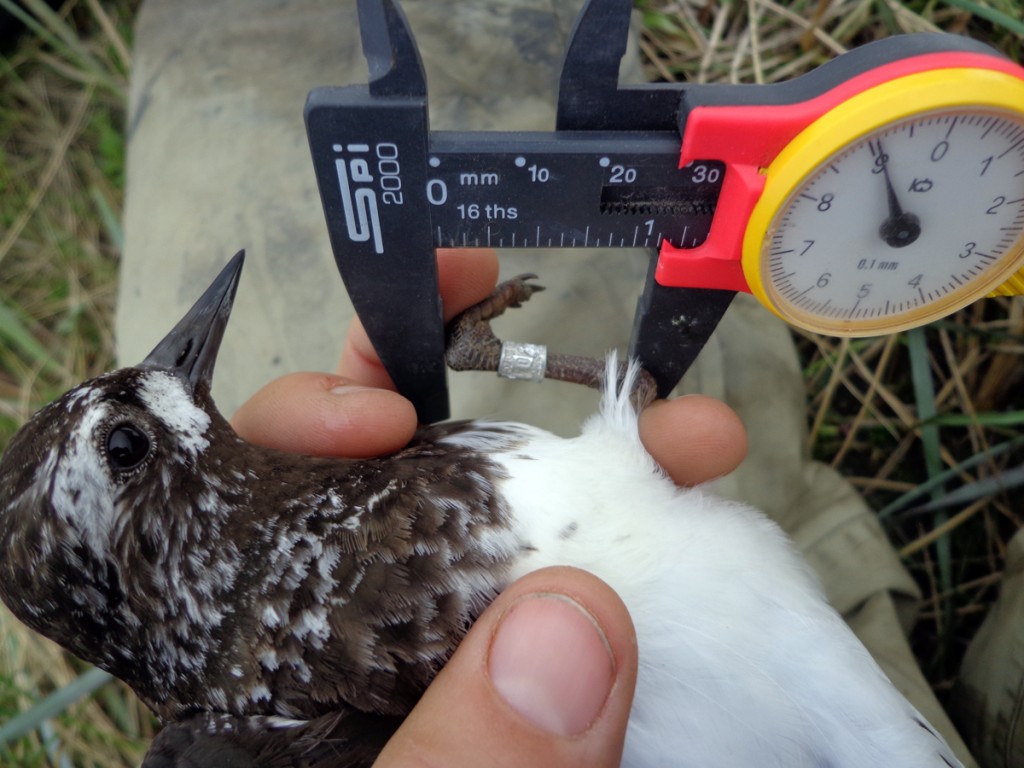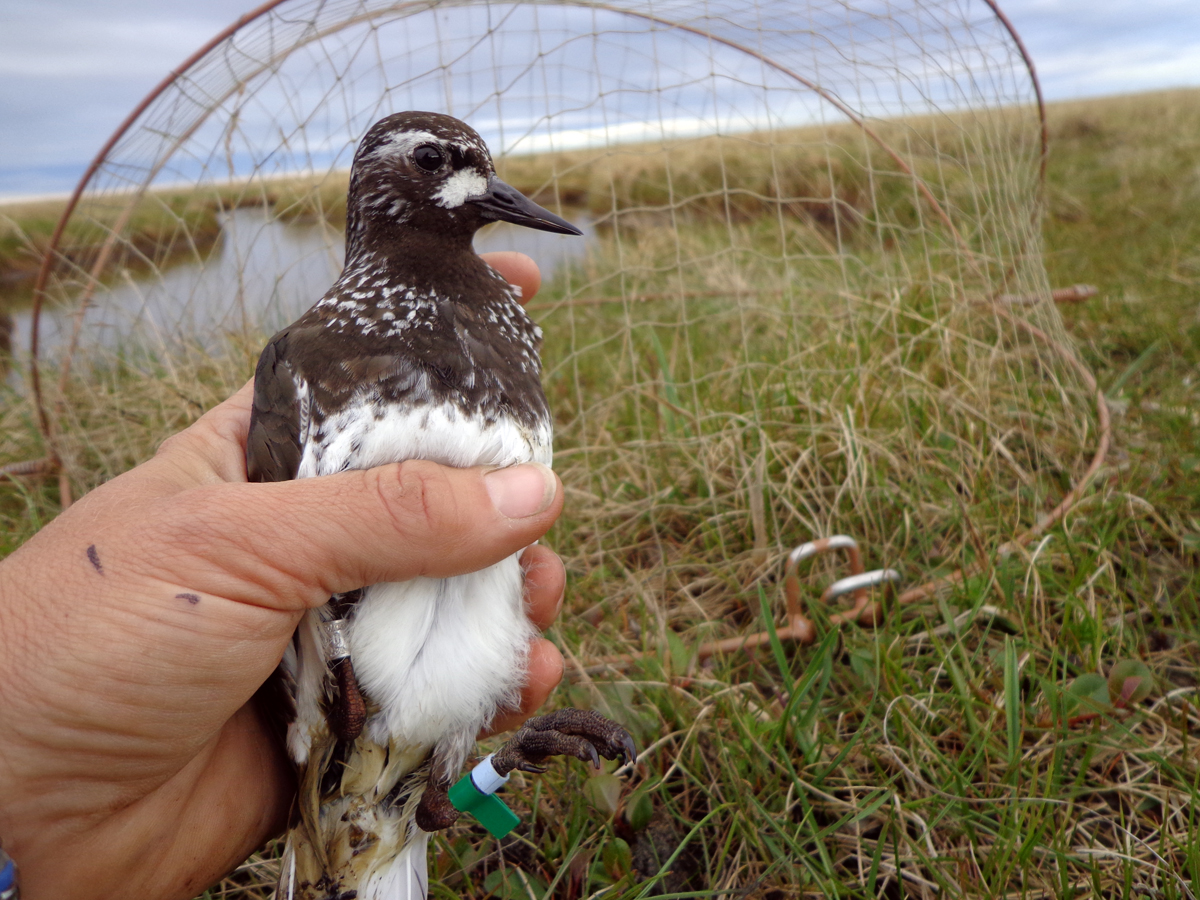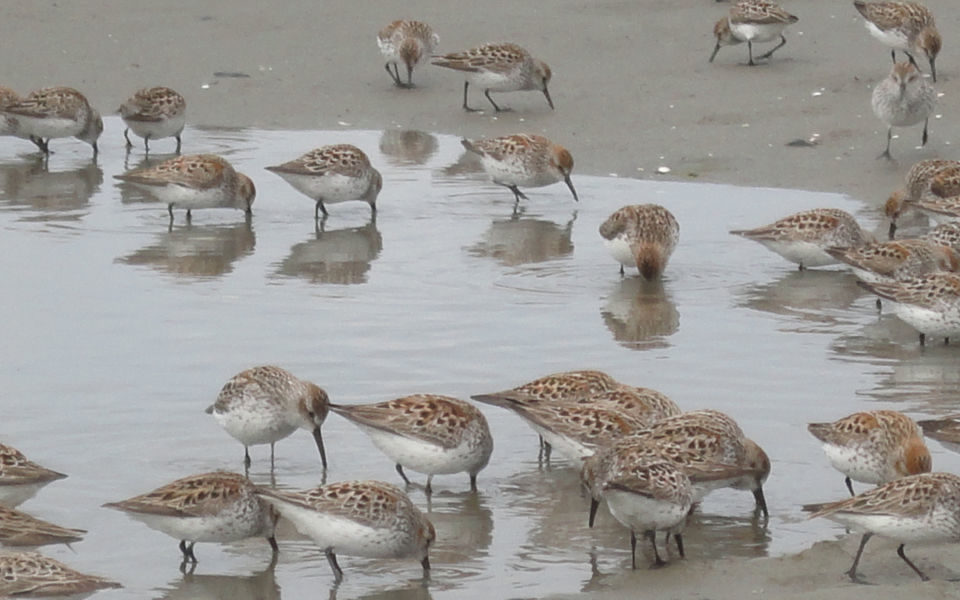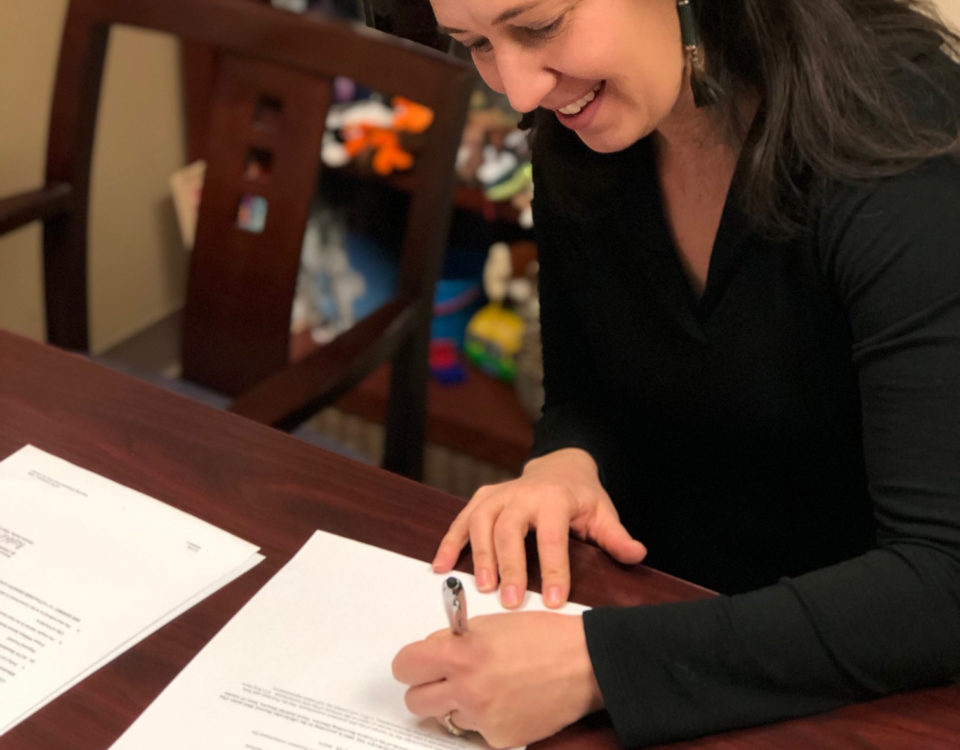Tracking Black Turnstones
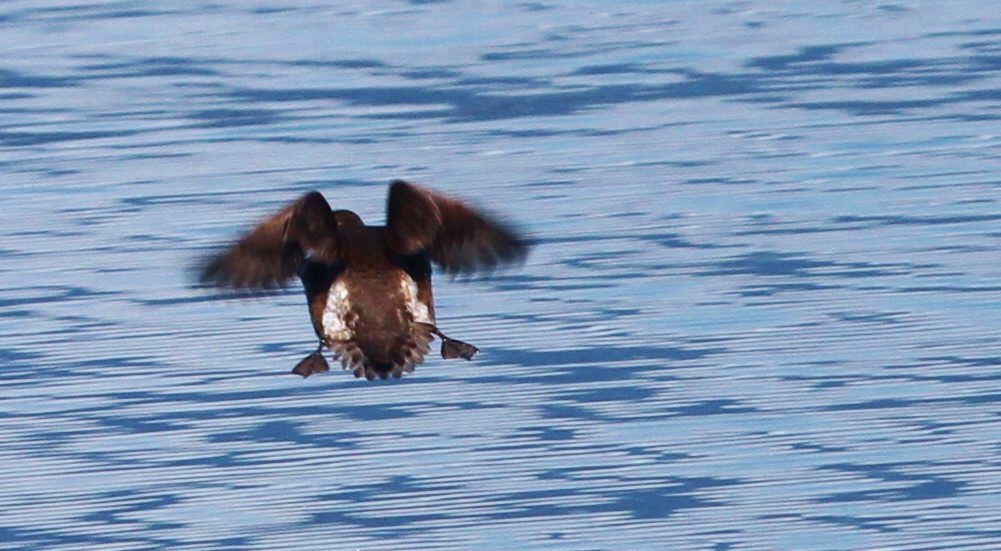
By Jessica Stocking, Avian Research Assistant
Since 2010, Drs. Mary Anne Bishop (PWSSC) and Audrey Taylor (University of Alaska Anchorage) have been studying the migratory behavior of Black Turnstones, a stocky, black and white shorebird of the Pacific coast. Turnstones spend summers along the coast of Alaska and winters from southeast Alaska to Mexico. Approximately 80% of the known global population nests in coastal meadows of the Yukon-Kuskokwim River Delta area, but little is known about their migratory behavior. The number of turnstones stopping at Montague Island in Prince William Sound has declined dramatically in the last 15 years. This project aims to determine if the decline is due to an overall population decline or a shift in migratory stopover sites.
To track turnstone movements, in 2013 researchers captured turnstones during March at Oak Harbor WA, a non-breeding area and in June at Yukon Delta National Wildlife Refuge AK, a breeding area. Each bird was given a unique combination of colored bands on its legs for individual identification. In addition, some birds received a small device that records light levels periodically, from which latitude and longitude can be calculated. This provides us with detailed information about the birds’ movements, including timing and locations of breeding and wintering activity, as well as stopover points critical to migration. Turnstones typically return to the same breeding and wintering sites year after year, and we plan to recapture birds at the same sites in 2014.
This work is made possible with funding and assistance from the National Fish and Wildlife Foundation, ConocoPhillips Alaska and the Yukon Delta National Wildlife Refuge.


